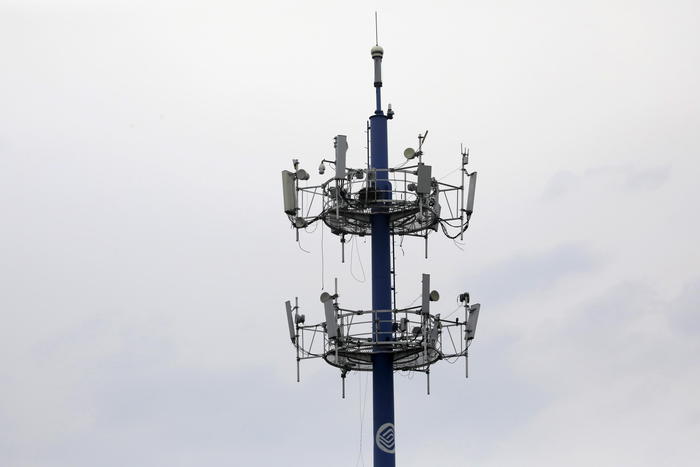A recent poll conducted by Harris X Poll for LinkNYC reveals strong support among New Yorkers for the installation of 32-foot 5G cell phone antenna towers in their neighborhoods to enhance Wi-Fi service, with proponents vastly outnumbering critics who consider these structures unsightly.
The survey posed a question to residents of the Big Apple: “Below is an image of the new Link5G smart pole designed to improve 5G cellular coverage and provide free Wi-Fi in the vicinity. Would you endorse the placement of these smart poles in your neighborhood?” The results indicated that 76% of respondents were in favor, while 12% expressed opposition, and an additional 12% remained undecided.
Participants were also asked, “How probable is it that you would utilize the free Wi-Fi if a Link5G smart pole were installed in your neighborhood?” Approximately 74% indicated their likelihood to use the free Wi-Fi, whereas 18% were less inclined to do so, with the remainder expressing uncertainty. Another query presented to residents was: “Which statement better aligns with your viewpoint? The Link5G smart poles will bring essential benefits to my neighborhood and community, or the Link5G smart poles will not enhance the value of my neighborhood and community.” In response, 61% believed that the 5G towers would indeed bring vital benefits, 18% disagreed, and the remainder remained unsure.
The plan involves the installation of approximately 2,000 5G poles across the city, with some already in place. However, opposition to these towers, particularly in areas like the Upper East Side and Soho, arises from concerns about their aesthetics and their perceived lack of compatibility with the neighborhood’s character.
The Upper East Side boasts historic and landmarked streets, such as Park Avenue, Fifth Avenue, and Madison Avenue, which are known for their fashion and tourism appeal.
On Monday, residents from Carnegie Hill on the Upper East Side plan to join Rep. Jerrold Nadler, Assembly members Alex Bores, and Rebecca Seawright, along with other lawmakers, to voice their protest against the 5G towers and to propose alternative solutions.
Bores has published a report titled “Navigating the 5G Revolution: Solutions for New York City’s Connectivity Challenges,” which recommends increased community involvement, the utilization of existing infrastructure for 5G installation, and the adoption of more refined designs that harmonize with the neighborhood’s character.
Nadler, referring to the current 5G tower plan as “flawed,” has urged the Federal Communications Commission (FCC) to reassess their impact under the National Historic Preservation Act.












